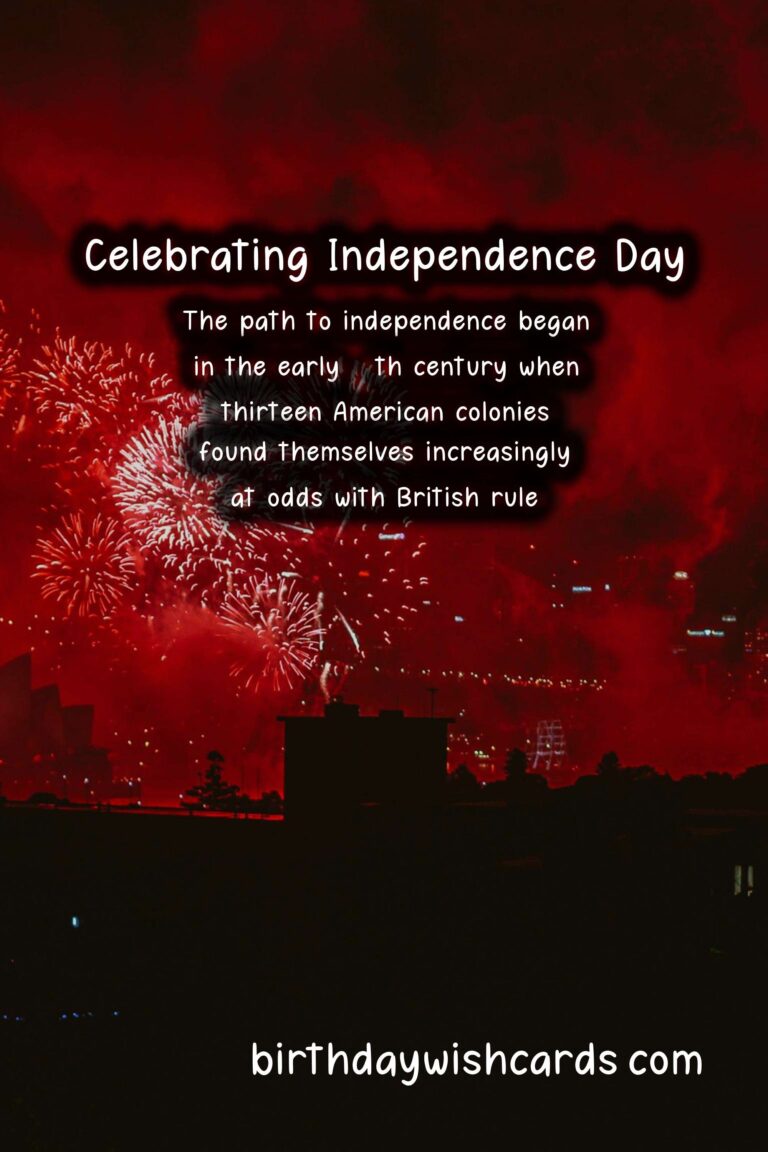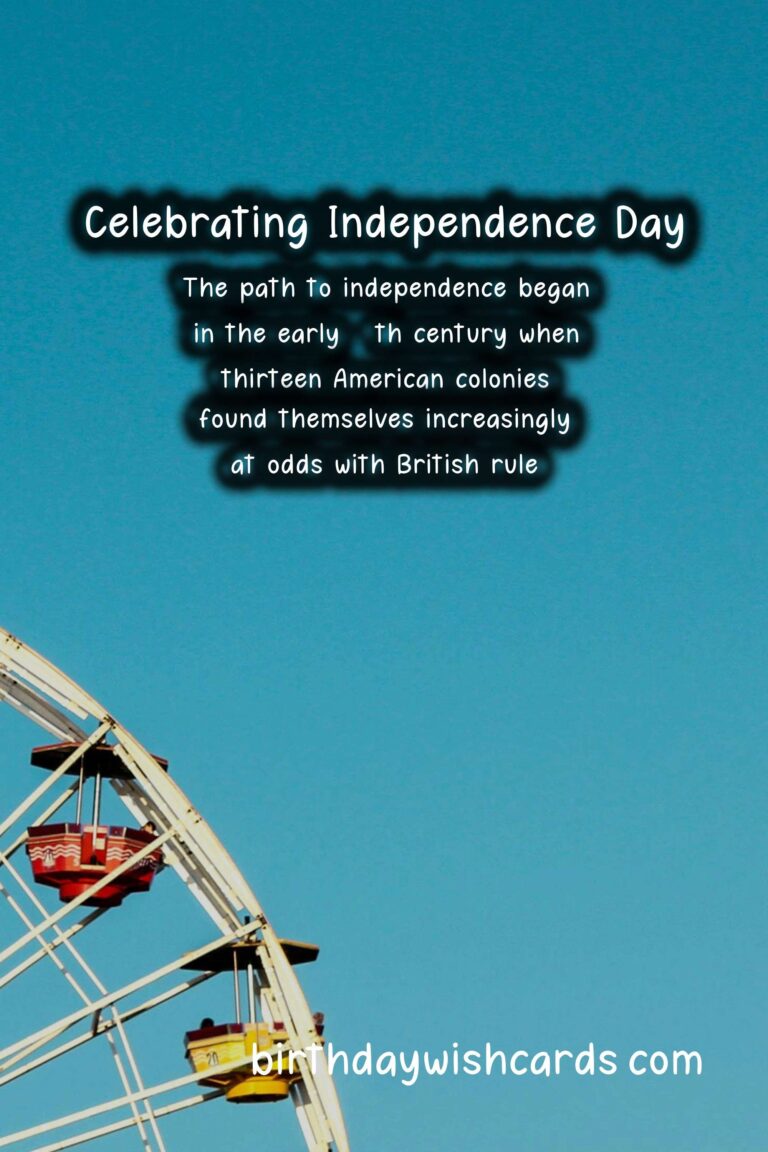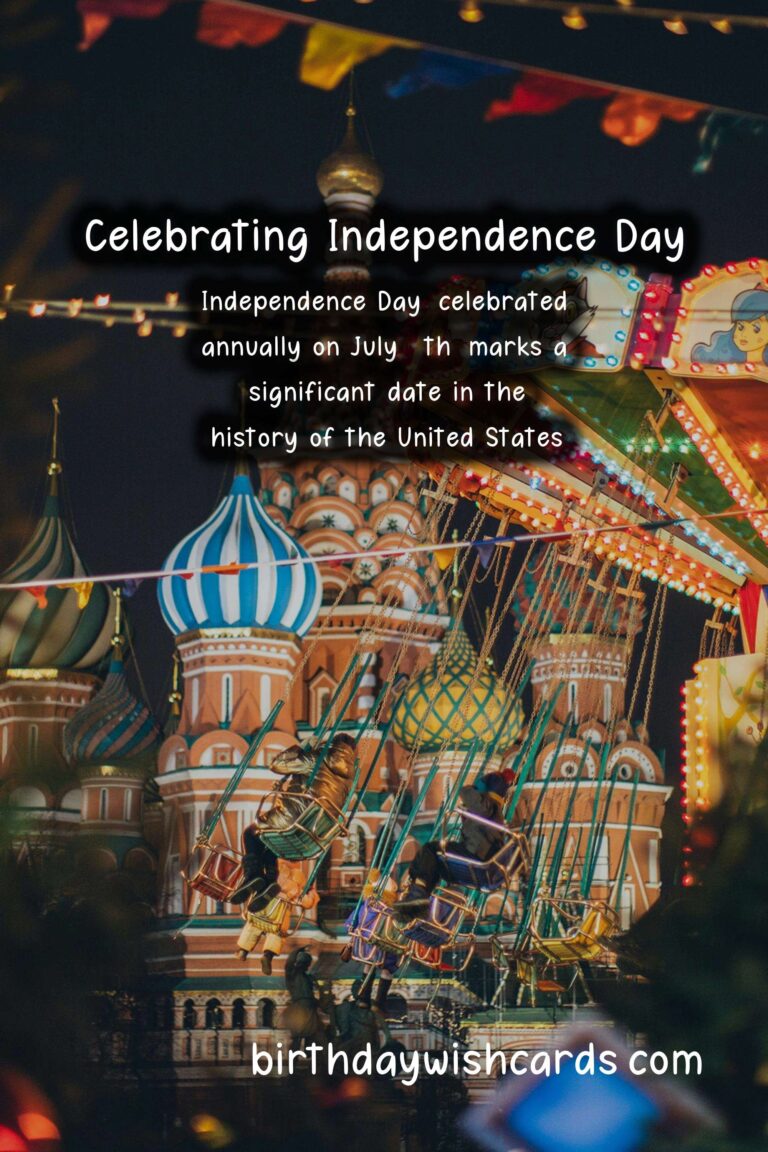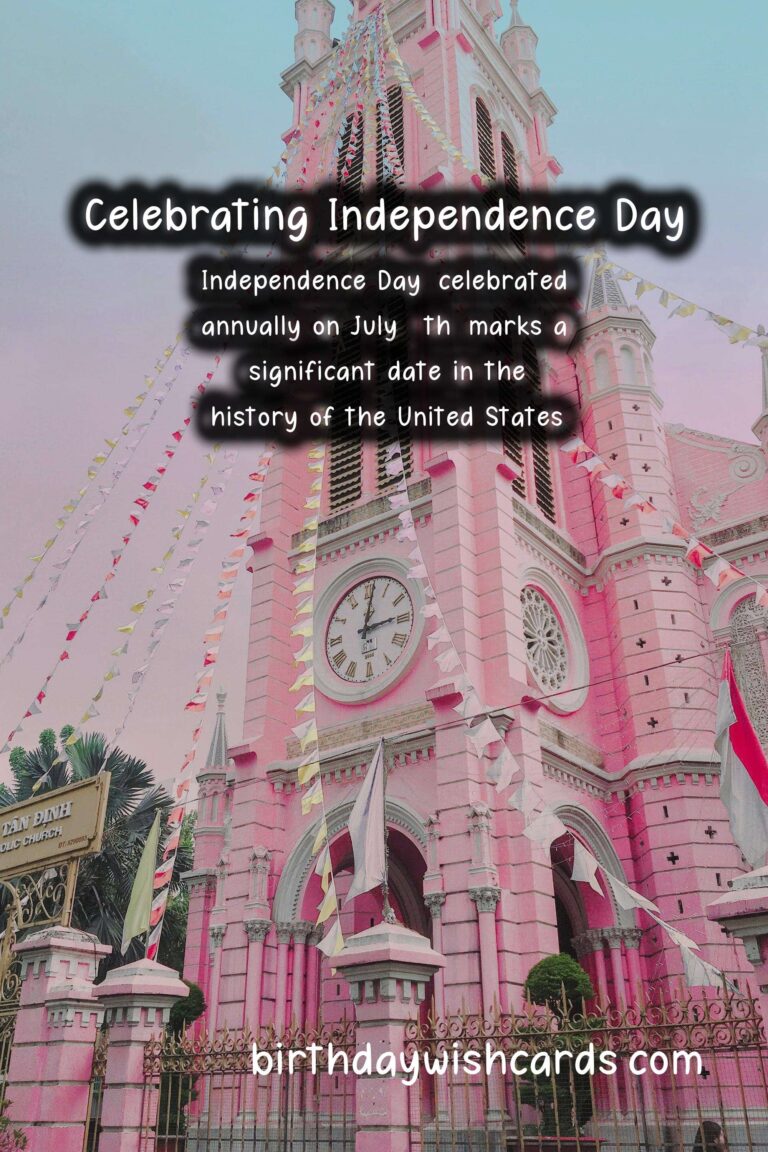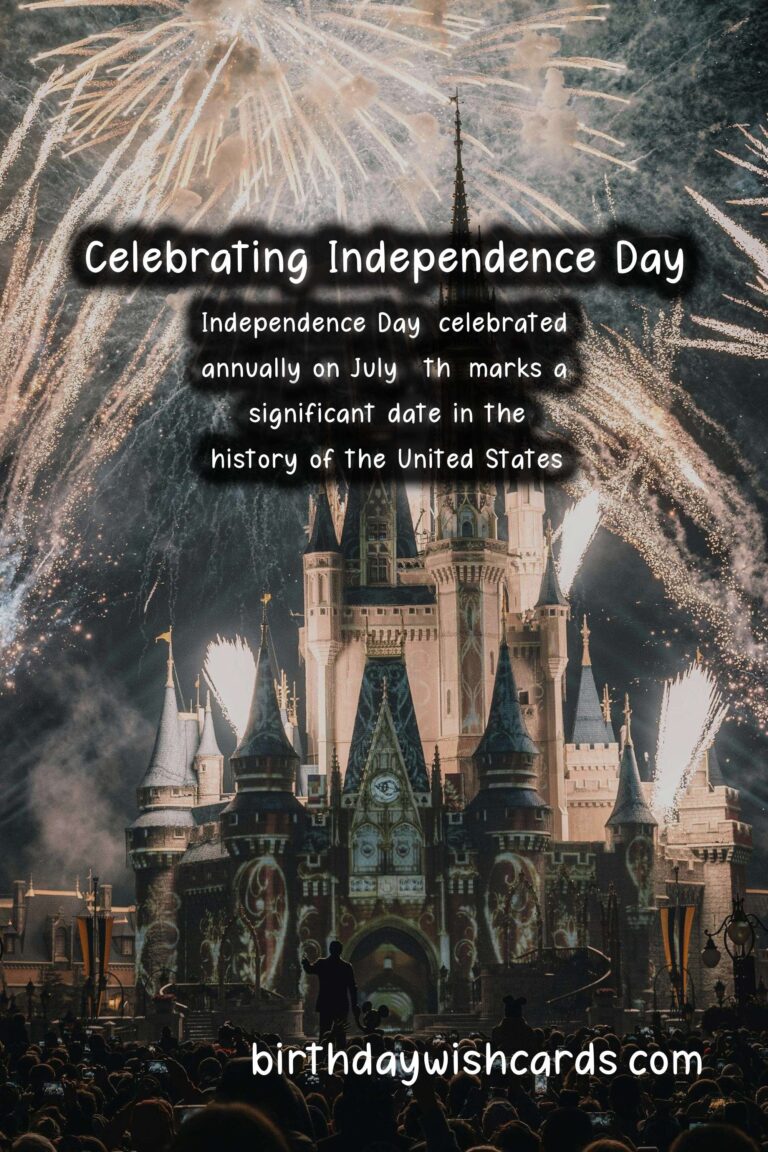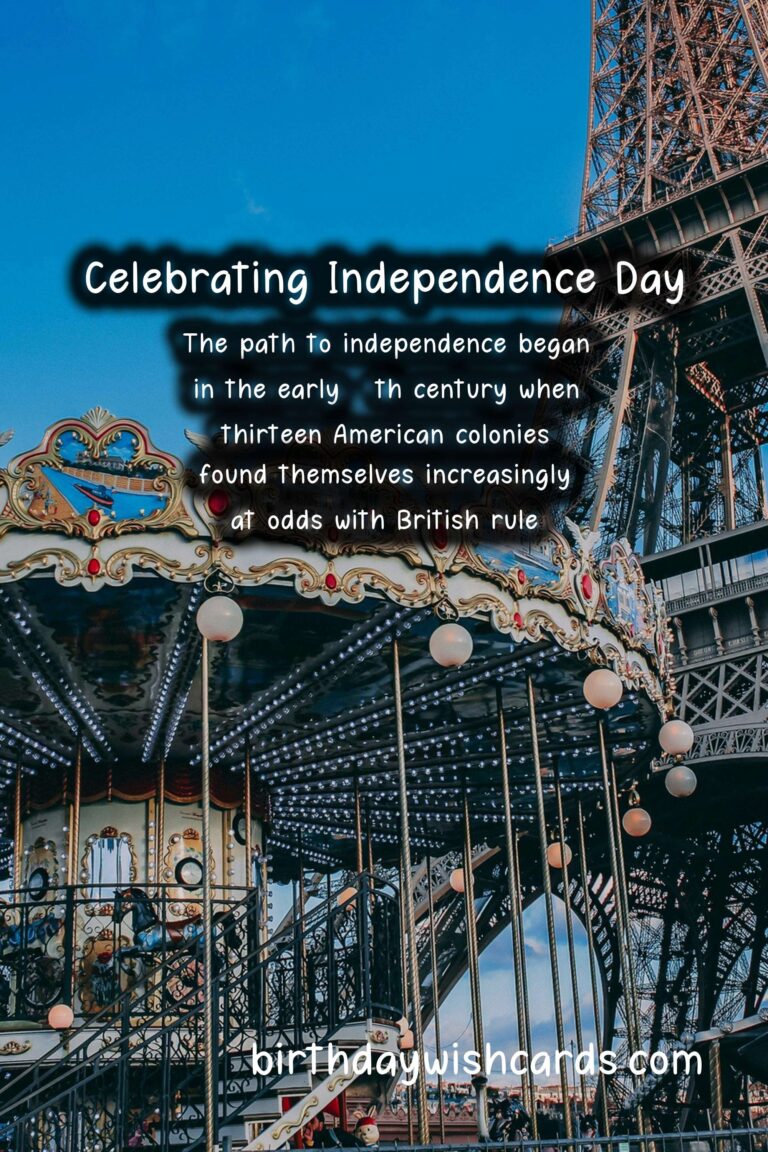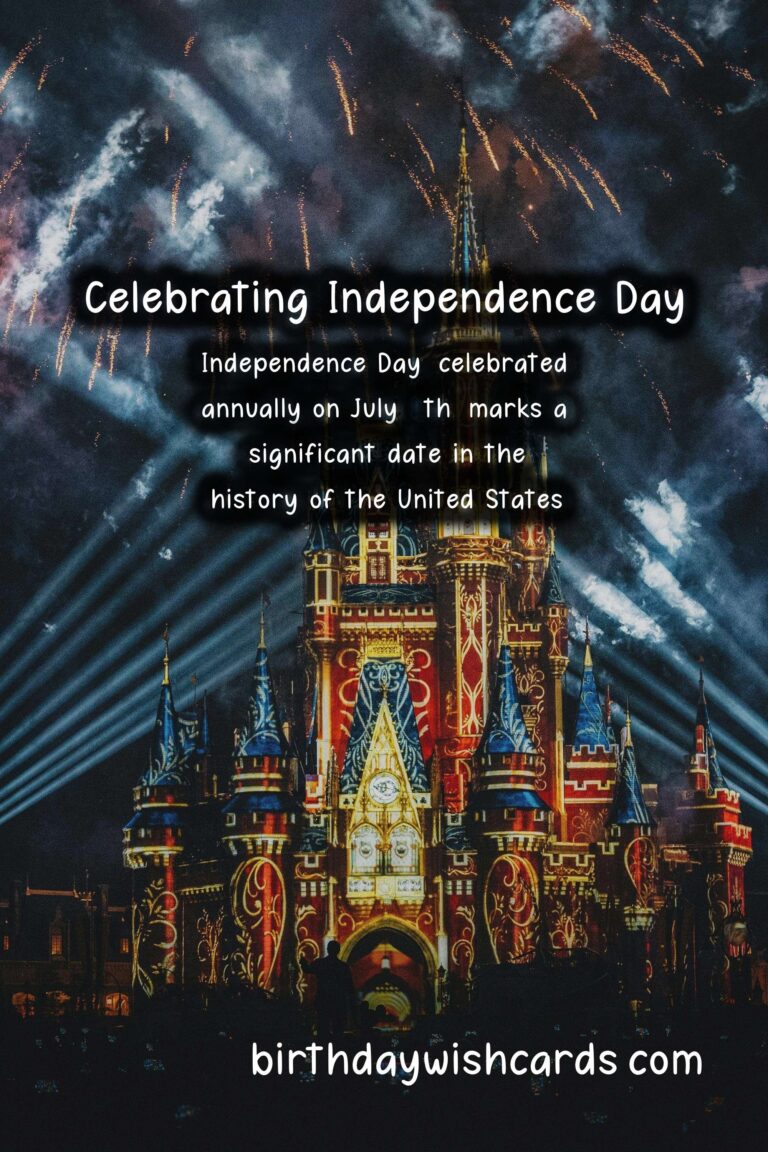
Independence Day, celebrated annually on July 4th, marks a significant date in the history of the United States. This day commemorates the adoption of the Declaration of Independence, a momentous event that laid the groundwork for a new nation founded on the principles of freedom and equality. In this article, we will delve deep into the origins of Independence Day, explore its key historical figures, and discuss how the celebration has evolved over the centuries.
The Road to Independence
The path to independence began in the early 18th century when thirteen American colonies found themselves increasingly at odds with British rule. The growing sense of discontent stemmed from several factors, including taxation without representation, the imposition of oppressive laws, and the desire for self-governance.
Key events such as the Boston Tea Party in 1773 and the Intolerable Acts of 1774 fueled colonial anger, leading to the formation of the First Continental Congress in 1774. During this congress, colonial leaders gathered to discuss their grievances against Britain and to strategize a unified response.
The Declaration of Independence
As tensions escalated into open conflict with the outbreak of the American Revolutionary War in 1775, the desire for independence became undeniable. On June 11, 1776, the Continental Congress appointed a committee to draft a declaration that would formally claim independence from Britain. This committee included prominent figures such as Thomas Jefferson, John Adams, and Benjamin Franklin.
Thomas Jefferson, known for his eloquent writing style, took the lead in drafting the document. After several revisions and discussions, the Continental Congress adopted the final version of the Declaration of Independence on July 4, 1776. This remarkable document not only declared the colonies’ independence but also articulated the philosophical foundation of the new nation, asserting that all men are created equal and endowed with unalienable rights.
Significance of July 4th
The adoption of the Declaration of Independence is why July 4th is celebrated as Independence Day. Yet, the date itself was not initially viewed as a holiday. In fact, the word ‘holiday’ was defined in the 18th century primarily as a religious observation.
It was not until the early 19th century that July 4th began to be recognized as a national holiday. Parades, fireworks, and patriotic displays became more common as a means of celebrating the birth of the nation. In 1870, July 4th was officially declared a federal holiday, solidifying its importance in American culture.
Traditions of Independence Day
Independence Day traditions have evolved significantly since the first celebrations in the late 18th century. Early observances included public readings of the Declaration, military displays, and communal events such as barbecues and picnics.
Today, Independence Day is celebrated with fireworks, parades, and family gatherings. Many Americans take time to reflect on the principles that underpin their freedom and the sacrifices made by those who fought for independence. Traditional foods such as hot dogs, hamburgers, and apple pie have also become synonymous with the holiday.
Modern Celebrations and Observances
In the 21st century, Independence Day celebrations vary widely across the nation. From large city parades in New York City to small-town festivities in rural America, the spirit of patriotism is palpable. Fireworks displays light up the skies, and families often take to parks and beaches to enjoy the summer day.
Moreover, the holiday has become an opportunity to not only celebrate American independence but also to reflect on social issues such as equality and justice. Various organizations use this day to promote community service and activism, encouraging citizens to honor the spirit of independence by giving back to their communities.
The Global Influence of Independence Day
Independence Day has influenced countries worldwide as a symbol of liberation. Many nations have drawn inspiration from the American experience, aspiring to achieve their own independence. Countries like the Philippines, India, and Brazil commemorate their independence days by paying homage to the ideals of freedom and democracy.
As a global icon, Independence Day remains a powerful reminder that the fight for liberty transcends borders and resonates with people everywhere.
Conclusion
Independence Day is more than just a celebration of the adoption of the Declaration of Independence; it is a testament to the enduring ideals of freedom, equality, and national pride. As Americans gather every July 4th to celebrate, reflect on history, and honor those who paved the way for their freedoms, they partake in a rich tradition that unites people from all walks of life.
In an ever-changing world, it is essential for each generation to understand the sacrifices made for liberty and to keep the flame of patriotism alive. Independence Day serves as a crucial reminder of the responsibilities that come with freedom and the need to stand up for what is just and equitable.
Independence Day, celebrated annually on July 4th, marks a significant date in the history of the United States. The path to independence began in the early 18th century when thirteen American colonies found themselves increasingly at odds with British rule. 
